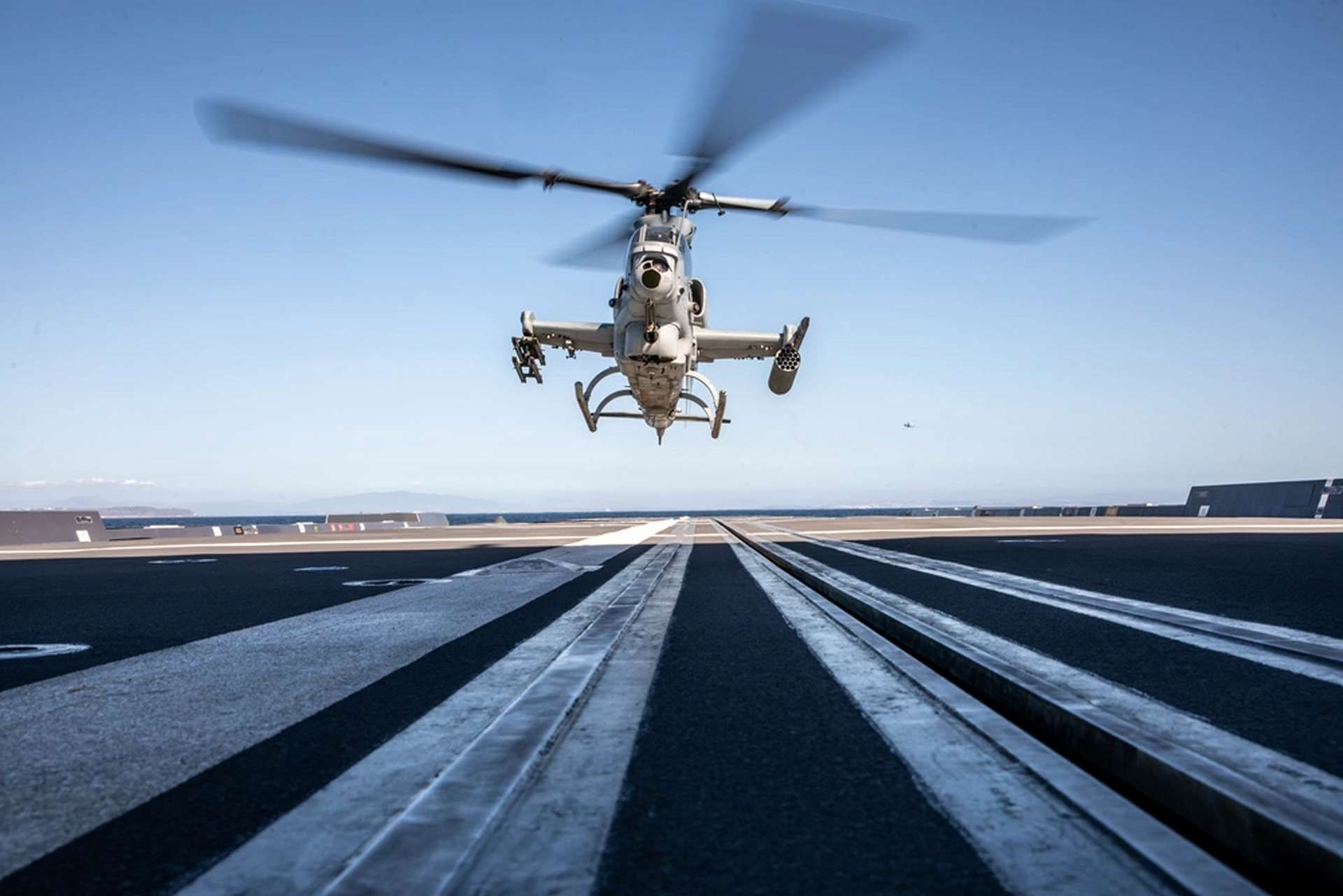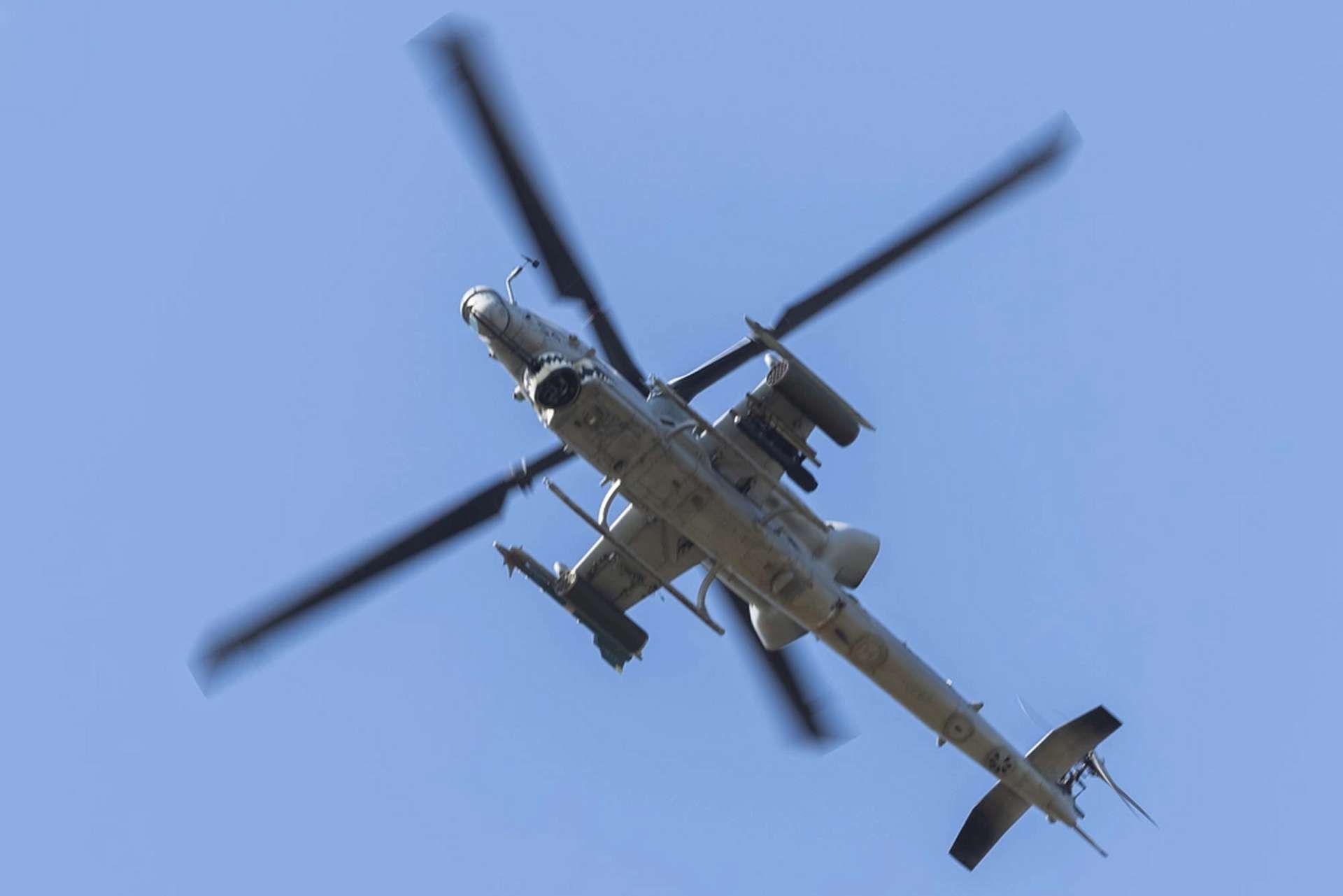Breaking News
US approves sale of 12 AH-1Z attack helicopters to Slovakia.
On July 31, 2024, the US State Department approved a potential Foreign Military Sale to Slovakia involving twelve AH-1Z attack helicopters, related equipment, and services, amounting to an estimated $600 million. The Bell AH-1Z Viper, a twin-engine attack helicopter developed by Bell Helicopter, is a modernized version of the AH-1W SuperCobra as well as a key component of the US Marine Corps' Aviation Combat Element (ACE).
Follow Army Recognition on Google News at this link

The AH-1Z Viper and the Bell UH-1Y Venom utility helicopter share many common components, including tailbooms, engines, rotor systems, and avionics architecture, reducing operating costs and maintenance. (Picture source: US DoD)
Slovakia's request comprises twelve AH-1Z attack helicopters, twenty-six T-700 GE 401C engines (including two spares), and 1,680 Advanced Precision Kill Weapon Systems (APKWS), WGU-59/B. Additionally, the package includes fourteen Honeywell embedded global positioning systems (GPS)/inertial navigation systems (INS), with two spares. Non-major defense equipment (MDE) items such as support and test equipment, weapons and munitions, countermeasures, and communication systems are also part of the deal. This list features mission planning software, Helmet Mounted Display Systems/Optimized TopOwl, technical refresh mission computers, ANVIS-9 night vision cueing displays, AN/ARC-210 Generation 6 receiver-transmitter 2036 radio equipment, AN/APX-123A identification friend or foe (IFF) systems, and various countermeasures and logistics support elements.
Specifically, the deal includes the M197 20 mm armament pod gun assemblies, PGU-27A/B target practice rounds, PGU-28A/B semi-armor-piercing high-explosive incendiary rounds, AN/ALE-47 chaff and flare countermeasures systems, MJU-32A/B and MJU-49B decoy flares, SMB875B/ALE flare simulators, RR-129A/AL chaff cartridges, RR-144A/AL training chaff cartridges, CCU-136A/A impulse cartridges, AN/AAR-47 missile warning systems, AN/APR-39C radar warning receivers and conversion kits, KIV-78A cryptographic appliques, and AN/PYQ-10C Simple Key Loaders with KOV-21 cryptographic cards. The support package encompasses U.S. Government and contractor engineering, field service representative services, technical and logistical support services, studies and surveys, as well as other related logistics and program support elements.

The AH-1Z Viper is a key component of the USMC's Aviation Combat Element (ACE), supporting expeditionary operations through offensive air support, anti-air warfare, and aerial reconnaissance. (Picture source: US DoD)
The Bell AH-1Z Viper, a twin-engine attack helicopter developed by Bell Helicopter, is a modernized version of the AH-1W SuperCobra. Its development, which began in the 1990s, was part of the United States Marine Corps (USMC) H-1 upgrade program. The AH-1Z Viper and the Bell UH-1Y Venom utility helicopter share many common components, including tailbooms, engines, rotor systems, and avionics architecture, reducing operating costs and maintenance. The AH-1Z features a four-blade, bearingless, composite main rotor system, an uprated transmission, and a new target sighting system. The AH-1Z made its maiden flight on December 8, 2000, and achieved combat readiness on September 30, 2010. It fully replaced the AH-1W SuperCobra by October 2020.
The AH-1Z's design focuses on survivability and efficiency. It includes energy-absorbing landing gear, self-sealing fuel tanks, and crashworthy seating. Active countermeasures such as radar and missile warning systems, chaff and flare dispensers, and engine exhaust suppression systems enhance its defensive capabilities. The helicopter's avionics suite, developed by Northrop Grumman, integrates mission computers and an automatic flight control system. Its navigation system includes embedded GPS, digital maps, and a low-airspeed air data subsystem. The AH-1Z also features advanced weapon systems, including a 20 mm M197 rotary cannon and various missile and rocket launchers.
Operational since 2010, the AH-1Z has seen continuous upgrades, including the integration of the AGM-179A Joint Air-to-Ground Missile (JAGM) and Link 16 datalink systems. The helicopter is a key component of the USMC's Aviation Combat Element (ACE), supporting expeditionary operations through offensive air support, anti-air warfare, and aerial reconnaissance.

The helicopter can mount up to 76 unguided or 38 guided rockets and up to 16 Hellfire missiles, allowing for a maximum payload of 2,615 kilograms. (Picture source: US DoD)
The AH-1Z Viper is operated by a crew of two: a pilot and a co-pilot/gunner (CPG). The helicopter measures 17.75 meters in length, stands 4.37 meters tall, and has an empty weight of 5,579 kilograms. Its maximum takeoff weight is 8,391 kilograms. Powered by two General Electric T700-GE-401C turboshaft engines, each providing 1,300 kW, the AH-1Z can achieve a cruise speed of 300 kilometers per hour and a maximum speed of 411 kilometers per hour. It has a range of 690 kilometers and a combat range of 232 kilometers with a 1,100-kilogram payload. The helicopter's service ceiling exceeds 6,100 meters, and it can climb at a rate of 14.2 meters per second.
The AH-1Z is equipped with six pylon stations on its stub wings, allowing for a maximum payload of 2,615 kilograms. It can carry a variety of armaments, including 70 mm Hydra 70 rockets (unguided) or APKWS II rockets (guided), AIM-9 Sidewinder air-to-air missiles, and AGM-114 Hellfire air-to-surface missiles. The helicopter can mount up to 76 unguided or 38 guided rockets and up to 16 Hellfire missiles. Additionally, it can be outfitted with the AGM-179 JAGM air-to-surface missiles, further enhancing its combat capabilities.
Internationally, the AH-1Z has garnered interest and orders from various countries. The Royal Bahraini Air Force, the Czech Air Force, and potentially Slovakia are among its users. Bahrain's order, confirmed in November 2018, includes twelve AH-1Zs, with the first six delivered in mid-2022. Production for Bahrain was completed in December 2022. The Czech Republic, aiming to retire its Soviet-era Mil Mi-24 gunships, finalized a sale of four AH-1Zs in December 2019, with additional helicopters anticipated due to the Russian invasion of Ukraine.
Other nations, including Pakistan and Nigeria, have shown interest in acquiring the AH-1Z, although political factors have sometimes hindered these transactions. Pakistan's order of fifteen AH-1Zs, approved in April 2015, was halted due to political tensions, leaving nine built helicopters stored at the 309th Aerospace Maintenance and Regeneration Group (AMARG) base. Nigeria's procurement was initially blocked over human rights concerns but received approval in April 2022 through a nearly $1 billion contract.

























